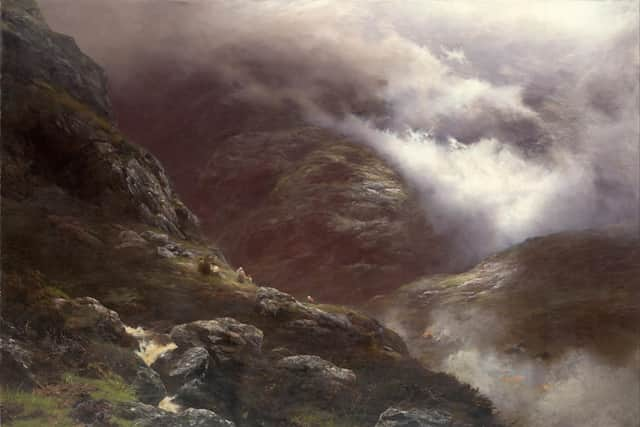Glencoe Massacre: Members of Clan MacDonald to gather for anniversary amid questions over 'modern hostility against Campbells'
Members of Clan MacDonald and residents of the Glencoe area will gather today to remember the 38 people who were killed by soldiers in their Highland homes in one of the worst atrocities in Scotland's history.
On this day, 332 years ago on February 13, 1692, 38 MacDonalds were killed at daybreak after Captain Robert Campbell of Glen Lyon acted on the King’s orders to “put all to the sword under 70”. Many more died as they fled the brutal attempt to assert state authority over the clan members, whose houses were also set on fire.
Advertisement
Hide AdAdvertisement
Hide AdOn Tuesday they will be remembered at the annual commemoration of the Massacre of Glencoe Service at St Mary’s Church, Glencoe at 11am. The service is followed by the march to the Memorial Cross at noon, which will be led by Pipe Major Brian B Heriot.


The pipes will also be played at a second service at the cross, where Psalm 121 will be read in Gaelic and wreaths laid.
Rosalin MacDonald, of the Glencoe Heritage Trust, said around 60 people were expected at the event. The family line of her late husband, Alistair, who died in 2021, dated back to the massacre, with Mr MacDonald devoting much of his life to the work of the heritage trust and the area’s history. While the losses are remembered for the anniversary, the divisions which led to the atrocity are not.
Mrs MacDonald said: “We often get asked is there any modern hostility towards the Campbells – the answer is no.”


The Glencoe Massacre had been planned at the very highest level of the state and carried out by soldiers who stayed for 12 nights in the homes of those they went on to kill. The killings caused uproar across the country and were deemed an outrageous affront to both the rule of law, as well the Highland code of hospitality.
It came after King William issued a proclamation to the clan leaders to pledge their allegiance or be answerable at their “highest peril”.
On December 30, Alistair McIain of Glencoe – head of a sept of Clan Donald – was crossing the north in deep wintry conditions to sign the pledge. Mistakenly, he went to Fort William and then was sent on to Inverary, a Campbell stronghold three days away, to pledge his allegiance to the King via the sheriff. He missed the deadline by six days.
Despite assurances at Fort William that McIain would be protected, word was delivered to the Secretary of State by Archibald, 10th Earl of Argyll, Chief of Clan Campbell, that MacIain’s certificate was void.
Advertisement
Hide AdAdvertisement
Hide AdThe King’s order for the massacre said: “This is by the Kings special command, for the good & safety of the Country, that these miscreants be cutt off root and branch”.
The Campbells have long been vilified for their role in the massacre. But accounts exist that a number of Campbells tried to warn the MacDonalds of an impending horror and urged them to flee.
Fugitives were helped at Castle Stalker, a safe place for Clan Campbell, according to tradition. Muster rolls also show Campbells made up a minority of the government-backed troops dispatched to Glencoe.
Public outcry led to a parliamentary commission, which found events to be a “murder under trust” with the Secretary of State then forced to resign. He was later appointed a member of the Privy Council and lobbied hard for the Act of Union 1707.
Comments
Want to join the conversation? Please or to comment on this article.